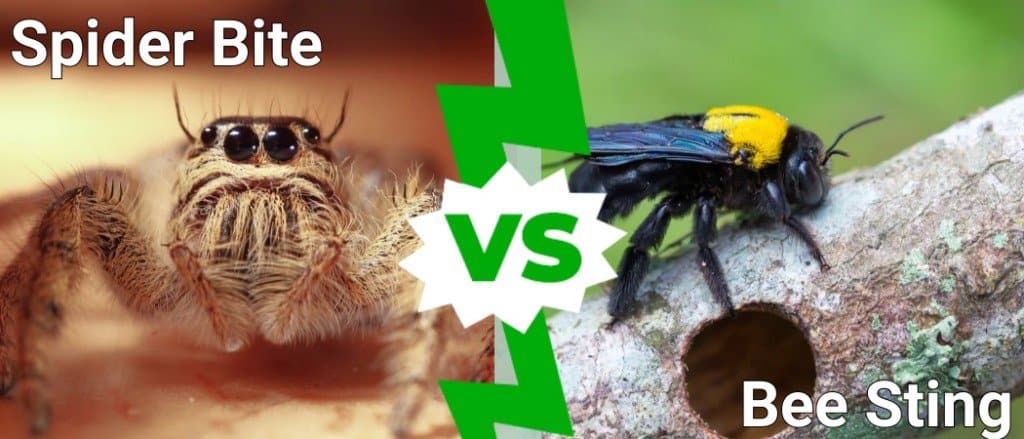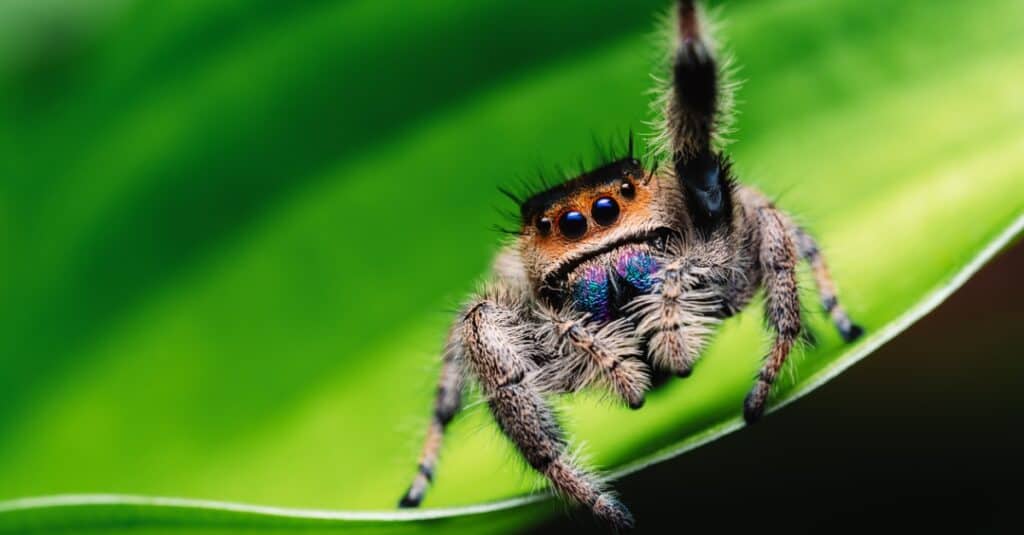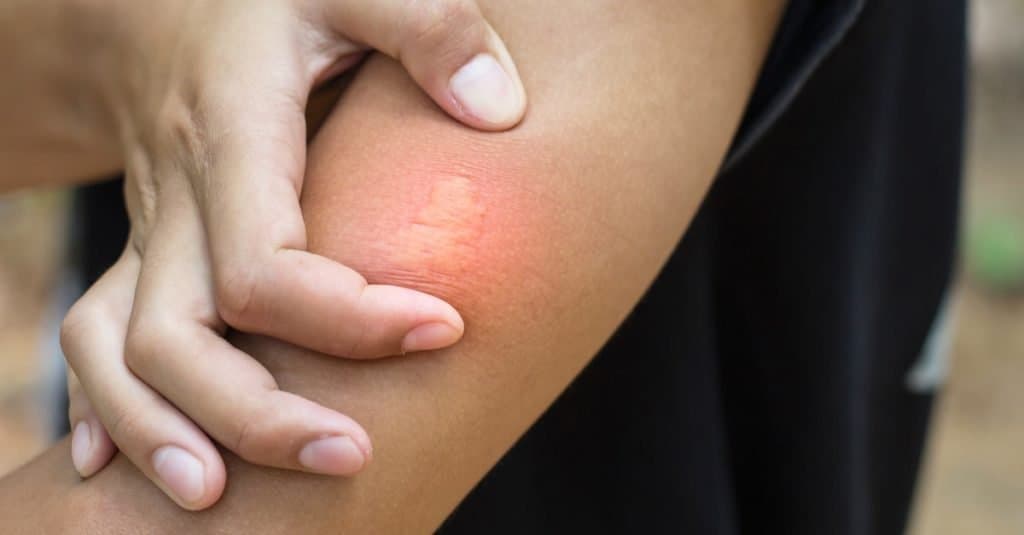Differentiating spider bites from bee stings is a little tricky. If you are someone who spends most of your time outdoors, spider bites or bee stings are not unusual. Ticks, bugs, ants, wasps, and mosquitos are everywhere, and getting bitten by these insects is quite inevitable. Fortunately for humans, bee stings and most spider bites are not fatal. Some species of spiders, like the brown recluse, wolf spider, or the black widow, may cause severe complications. Yet, generally, most spider bites are not harmful. Bee stings can burn but often won’t cause severe symptoms. But between spiders and bees, which can be more dangerous to humans? And which bite or sting hurts more? Below, we’ll compare the essential characteristics of spider bites vs bee stings and how to identify the two quickly.
Comparing a Spider Bite vs a Bee Sting

| Spider Bite | Bee Sting | |
| Venom | Depends on the spider species. Some spiders do not contain venom. | An average of 140-150 micrograms per sting. |
| Appearance | Red, inflamed bump on the skin, more like a mosquito bite. | Red welt with a tiny black dot. The black dot is the bee’s stinger left on or beneath the skin as it detaches from the bee’s body. |
| Pain level | Average pain level of 5 to 7 | 1.0 in Schmidt sting pain index. 2.0 for the Western honey bee. |
| Reactions/Symptoms | Common itching, pain around the bite site, sweating, red or purple blister, and headache. | Sharp, burning pain on the bite site, a red welt, and slight swelling around the area of the bite. |
The 4 Key Differences Between a Spider Bite vs a Bee Sting
The differences between a spider bite and a bee sting lie in their venom, appearance, pain level, and reactions.
Most spider bites and bee stings do not pose any threat to humans. The most common results of their stings and bites are itching, pain, and swelling for a few days. However, since bees have a slight amount of venom in their stingers and some spider species contain venom in their bites, some individuals may develop allergic reactions. But which of them hurts more and which can be dangerous to humans?
Spider bites and bee stings can both be excruciating, but common bites from non-venomous spiders are studied to be less painful than bee stings. While both bee stings and common spider bites pose no danger to humans, some specific spider bites can be lethal.
Spider Bite vs. Bee Sting: Venom

For people with allergies, bee stings can trigger complications.
©iStock.com/Jan Rozehnal
Bees might look like innocent insects only trying to do their work. Yet, they might sting in defense if they are disturbed or when their beehive faces danger. Luckily, there is no reason to fear bee stings. It may come as a surprise, but bee stings contain little venom, which triggers the bite site to swell. Bees’ venom consists of proteins that can affect immune systems. Since bees can only inject 140-150 micrograms of venom into the human body, their stings cannot induce harmful effects. For some people with allergies or weakened immune systems, bee stings can trigger serious complications but often won’t result in any deadly consequences.
Spiders, on the other hand, may or may not contain venom. Depending on the spider species, the venom level and its effect vary. Thankfully, of all 3,000 species of spiders found in the United States, only four of them are highly venomous and lethal to humans. For the rest, their bites can either be non-venomous at all or may contain very little venom that the victim might not even notice.
Spider Bite vs. Bee Sting: Appearance

©iStock.com/ajma_pl
When you haven’t seen the culprit of your itchy red bump, you might wonder whether it was a spider or a bee who hurt you. Yet, there are a few main differences between their bites and stings. While bee stings and spider bites almost hurt the same, bee stings may exhibit a visible stinger left on or beneath the skin. Bee stings often look like a red welt with mild swelling around the bite site. On the other hand, spider bites look like a red bump on the skin. Some non-venomous spider bites may even go unnoticed.
Spider Bite vs. Bee Sting: Pain Level
Bee stings are typically at the lowest scale based on the Schmidt sting pain index. Bee stings scaled only 1.0 in the pain index, which means it is less painful than fire ants (1.2), hornets (2.0), wasps (3.0), and yellow jackets (2.0). Often, bee stings feel like a minor insect bite with an instant, sharp burning pain. The pain and swelling usually go away after a few hours.
Spider bites are studied to be less painful than bee stings, with an average pain level of 5 to 7 (depending on the venom level). Like bee stings, spider bites commonly leave mild symptoms such as immediate pain and swelling.
Spider Bite vs. Bee Sting: Reactions/Symptoms

Spider bites look like a red bump, while bee stings often look like a red welt around bite sites.
©WIRACHAIPHOTO/Shutterstock.com
Bee stings are not dangerous to humans. While bees have venom in their stingers, it is not potent enough to cause any harmful symptoms to humans. Common symptoms of bee stings include burning pain on the site, a red welt representing the stung area, and mild swelling. While they have weak venom, some humans with a weakened immune system can experience dizziness, nausea, or difficulty breathing.
Bites from non-venomous spiders often won’t leave symptoms other than itching and mild pain. Some mildly venomous spider bites also often leave subtle symptoms but may trigger complications for people allergic to the spider’s venom. Symptoms for allergic people might include:
- Sweating
- Headache
- Difficulty breathing
- Nausea and vomiting
- Muscle pain or cramps
- Chills
- Fever
- Purple or red blisters
A few spider species can have very potent venom in their bites, such as the Brazilian wandering spider, and can cause seizures, irregular heartbeat, abdominal cramping, hypothermia, and convulsions. Since all bee species won’t even go as far as causing seizures to people, spider bites are deemed more dangerous to humans than bee stings.
Up Next:
- Bee Sting vs. Wasp Sting
- Hornet vs. Wasp – How to Tell the Difference in 3 Easy Steps
- 13 Animals That Sting (Ranked in Order of Most Painful)
The photo featured at the top of this post is © Frode Jacobsen/Shutterstock.com
Thank you for reading! Have some feedback for us? Contact the AZ Animals editorial team.







